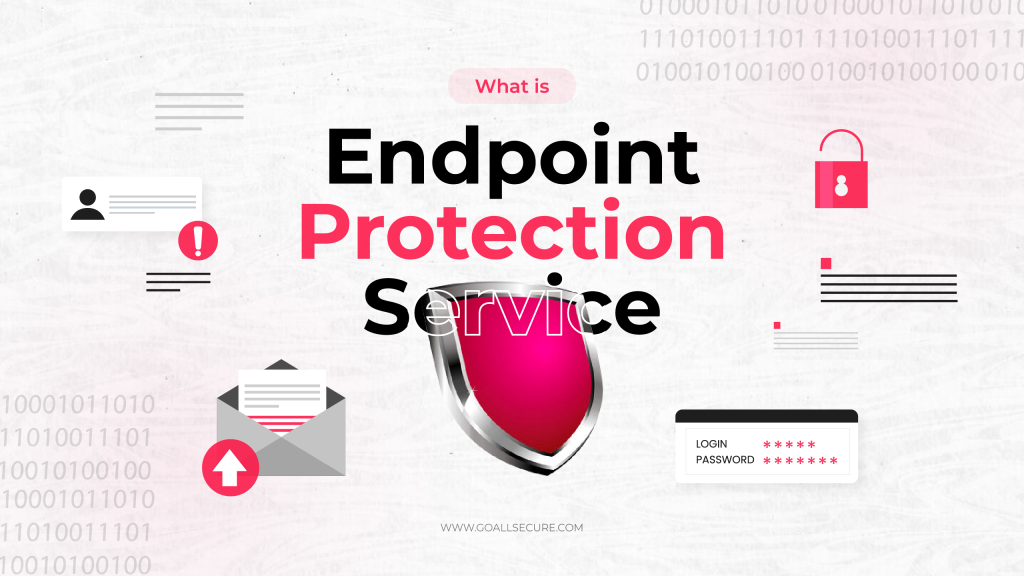The adoption of Internet of Things (IoT) technologies has grown rapidly in recent years. Its market size is expected to reach $1.842 billion globally by 2028. Naturally, the number of IoT devices in use worldwide is bound to increase as the market grows. It is predicted that this number will reach almost 25.4 billion in 2030. That’s a lot of devices, isn’t it?
The Internet of Things (IoT) makes it possible for us to connect and communicate with our equipment, which is quite advantageous for organisations and enterprises. However, organisational leaders must realise that, despite the enormous advantages the Internet of Things may provide, the expansion of linked devices may also present a security risk. Ever heard of the cases of nanny cam hacking? That’s only one illustration of an IoT disaster. In this blog, we will touch upon the most prevalent IoT security issues and methods for minimising them so that your business may adhere to the standards and pursue development in the safest manner possible.
What Is IoT Security?
Firstly, let’s understand what the Internet of Things is: it is a large network of interconnected physical devices (i.e., things) that share data with other devices and systems online. IoT is frequently used as an umbrella term to describe a highly distributed network that combines connections with sensors and lightweight applications that are embedded into tools and devices. These are used to communicate data with other hardware, software, and systems for everything from connected cars and medical equipment to smart plugs and power grids. Business Insider defined IoT as “the connection of devices to the Internet”. In other words, the Internet of Things (IoT) involves both connecting devices to the Internet and enabling device-to-device communication. A device has the potential to be an IoT component if it has an on/off switch.
IoT security, on the other hand, is the collective term for all the steps taken to establish the security of this class of devices while also taking into account the many threats they face. IoT security is a broad spectrum of measures that include plans, instruments, systems, procedures, and techniques employed to safeguard all facets of IoT.
Why Is IoT Security Important for Businesses?
IoT is regarded as one of the most important security flaws that affects almost everyone, including businesses, governments, and consumers. Despite the usefulness and convenience that IoT devices provide, there are incredibly high risks involved. It is crucial to ensure IoT security since these gadgets give hackers a broad and accessible attack surface. IoT devices were not made with any form of security embedded in the design. Furthermore, implementing security software after the fact is generally not an option. That is why these devices are vulnerable to cyber attacks since security features frequently take a backseat to connectivity and performance.
1.2 million IoT devices from enterprise and healthcare organisations were used for research, which discovered that 98 per cent of all IoT device traffic was unencrypted. This speaks to the fact that while Internet of Things (IoT) gadgets are the leaders in smart automation and ease of operation, every new device adds a new access point for threat actors. When we examine how IoT devices are monitoring more of our personal lives, businesses, and essential infrastructure, the necessity of IoT security becomes apparent. Today, IoT security is essential to keeping IoT systems secure.
What Are the IoT Security Risks for Businesses?
Even though IoT boosts productivity, encourages networking, and makes some activities easier, there are undeniable security risks. IoT devices were not developed with security in mind, as was already mentioned. As a result, numerous IoT security issues can have severe consequences. There aren’t many standards and regulations governing IoT security, in contrast to other technological solutions. In addition, the majority of individuals are unaware of the dangers that come with IoT systems. Insecure practices by users and organisations, who might lack the tools or expertise to properly safeguard their IoT ecosystems, constitute an additional concern. On top of that, most organisations are unaware of the magnitude of IoT security concerns. The following are some of the numerous IoT security concerns:
- Weak authentication and authorization
- Lack of encryption and built-in security
- Vulnerabilities in firmware and software
- Insecure communications
- Difficulty in patching and updating devices
- Malware attacks
- Escalated cyberattacks
- Information theft and unknown exposure
- Unpatched vulnerabilities
- Vulnerable APIs
- Device mismanagement and misconfiguration
- Gaps between mobile networks and the cloud
- Low processing power
- Shared network access
- Physical vulnerabilities
Therefore, before connecting any device to the internet, organisations should get familiar with the methods for reducing IoT security concerns, and businesses should think about investing in an IoT course to clear the way for safe use.
Latest IoT Security Attacks that No One Expected
There have been several instances recently, especially, of how even harmless IoT devices may be misused and utilised maliciously. Some of the more well-known instances have only served as examples of what is achievable, while other instances have featured actual attacks. Here are some examples of IoT devices being compromised by cybercriminals:
The Mirai Botnet (aka Dyn Attack)
In late 2016, the Mirai botnet, consisting of 145,607 video recorders and IP cameras, was the largest IoT security breach. The hacker, a college student, launched an unprecedented attack on OVH, consuming nearly one terabyte of bandwidth per second. The botnet targeted Dyn, causing massive internet disruptions for Netflix, Twitter, Reddit, The Guardian, and CNN. Mirai’s model is still in use, and other hackers may have more nefarious goals.
The Stuxnet Attack
A famous IoT attack in Iran targeted a uranium purifying plant in Natanz, allowing hackers to access Siemens Step7 software and control various machines. The plant suffered significant losses due to inadequate security and outdated software. Over 900 uranium enrichment stabilisers and centrifuges were destroyed, affecting 30% of total uranium purification efficiency.
The New Jeep Hack
In 2015, a Jeep SUV was hacked by hackers who accessed its CAN bus, allowing them to control all systems remotely. The incident highlights the vulnerability of any IoT device, as even smart cars can be hacked and connected to internet servers, highlighting the need for cybersecurity measures.
Target’s credit card breach
In 2013, hackers breached Target’s network, stealing credit card information from millions of transactions. They stole login credentials from an HVAC vendor using IoT sensors. This incident highlights the importance of IoT applications, as hackers can access client networks and steal valuable data.
Jude Medical’s pacemakers
In 2017, the FDA revealed that over 465,000 implantable pacemaker devices were vulnerable to hacking, posing a potential threat to life. St. Jude Medical promptly updated these devices, ensuring their safety.
Here’s a list of some severe threats created by connected devices that are exploitable:
- Smart security cameras are crippled by vulnerability
- Hackers can “Faxploit” connected fax machines
- Smart TVs and smart bulbs can be hacked
- Unpatched bug chain poses ‘mass account takeover’ threat to Yunmai weight monitoring app
- A smart home is vulnerable to cyber attack
- A smartphone’s microphone can be used to launch an acoustic side-channel attack
- Hackers can steal your identity and bank details from a coffee machine
- Connected printers can serve as potential vectors for cyber attacks
- The SmartTub web bugs are capable of exposing information of Jacuzzi owners
- Smart speakers can be hacked
- Even internet-connected gas stations are vulnerable
Strategies for Businesses to Defend Against IoT Security Risks
The security concerns and dangers outlined in this blog cannot be resolved instantly. For the effective security of highly specialised IoT systems and devices, particular techniques and tools are required. Organisations must take into account a wide range of new security concerns brought on by the introduction of the latest technologies and the growth in global IoT deployments. Businesses are responsible for implementing secure systems to handle customer and corporate data. Here are a few suggestions by our IoT security experts for businesses to employ, lessen risks, and stop threats:
- Profile every device
- Assign an administrator of things to help minimise security oversights and exposure
- Apply network segmentation as well as segment devices
- Implement zero-trust architectures and multi-factor authentication
- Limit network endpoints
- Routinely monitor and scan communication channels, along with monitoring baseline network and device behaviour
- Update software and regularly check for patches
- Change the default passwords and use strong and unique passwords for all accounts
- Secure IoT-cloud convergence and apply cloud-based solutions
- Enhance physical security to prevent unauthorised access to devices
- Education and training staff, vendors, and partners
- Elevated network security and network traffic monitoring analysis
It takes a combination of technologies and recommended strategies to protect your IoT device. Your clients, data, and devices may be subject to cyberattacks if your connectivity solution has holes in it. Now, managing new IT initiatives while also running your business may be extremely difficult and, occasionally, downright impractical. Because of this, GoAllSecure is pleased to offer businesses a variety of IoT security services. We have years of experience protecting businesses like yours successfully, so we know how to create systems that follow strict security standards and specifications. The future is uncertain, but the state of your IoT cyber security posture doesn’t have to be. Don’t be afraid to get in touch with our team to talk about a prospective partnership.

















 TRAVEL & HOSPITALITY
TRAVEL & HOSPITALITY HEALTHCARE
HEALTHCARE RETAILS & ECOMMERCE
RETAILS & ECOMMERCE BANKING & FINANCIAL
BANKING & FINANCIAL AutoMobile
AutoMobile MANUFACTURING
MANUFACTURING FOOD
FOOD EDUCATION
EDUCATION



